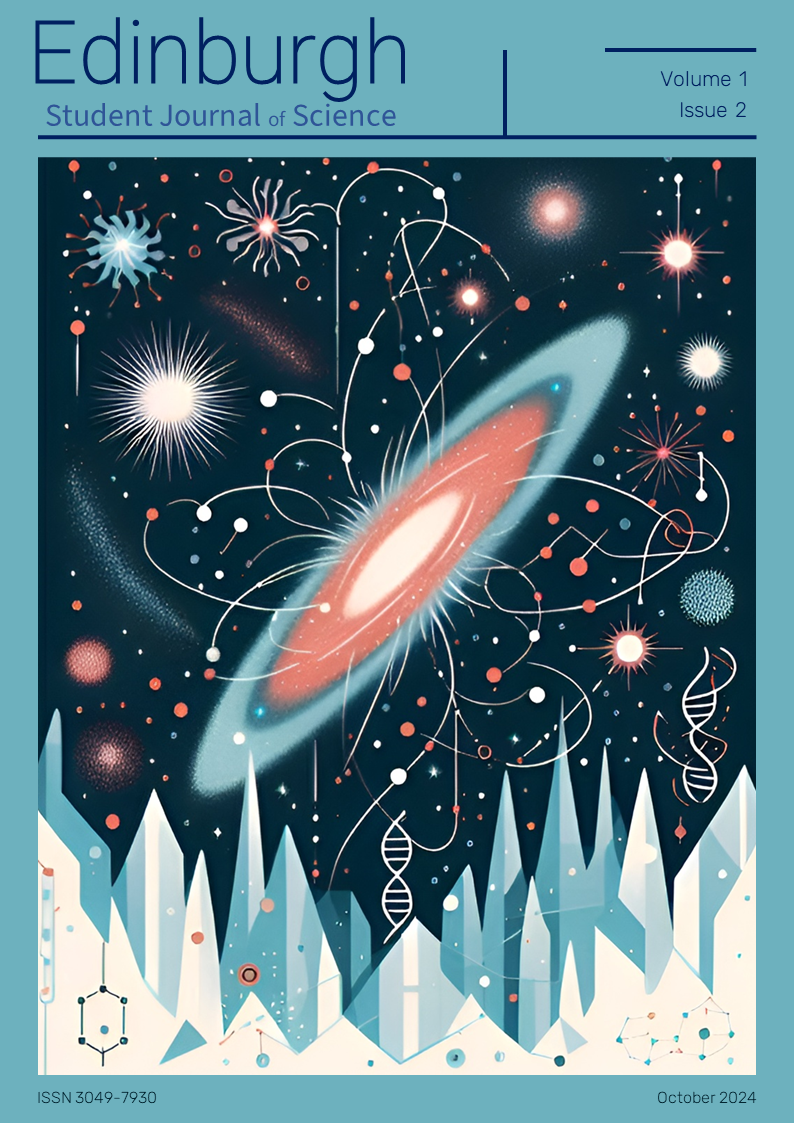Investigating the Inharmonicity of Piano Strings
DOI:
https://doi.org/10.2218/esjs.9815Keywords:
Inharmonicity, Acoustics, String Tuning, Harmonic FrequenciesAbstract
In classical physics, ideal string vibrations are modelled using the harmonic series, yet real mode frequencies deviate from the integer set of harmonics due to string stiffness, known as inharmonicity. This work investigates this phenomenon in five piano strings on a Yamaha GB1 Grand Piano. Using the audio software Audacity for spectral analysis, the inharmonicity coefficient is determined experimentally and theoretically based on string properties. These values are comparable with previous research, offering insights into tuning techniques to minimise dissonant inharmonicity. Possible innovations from inharmonicity research are explored, with suggestions such as the temperature-dependent self-tuning systems for acoustic pianos.
Downloads
References
Berg, R. E. ‘Sound’ Accessed 4th Feb 2021 (2020)
Campbell, M. and Greated, C. ‘The Musician’s Guide to Acoustics’ (Oxford University Press; 1994)
Cohen, E. A. ‘Some Effects of Inharmonic Partials on Interval Perception’ Music Perception 1 3 (1984)
Fletcher, H. ‘Normal Vibration Frequencies of a Stiff Piano String’ The Journal of the Acoustical Society of America 36 1 (1964)
Heetveld, V. and Rasch, R. A. ‘String Inharmonicity and Piano Tuning’ The Journal of the Acoustical Society of America 76 S1 (1984)
Nave, R. ‘Fundamental and Harmonics’ Accessed 2nd Feb 2021 (2020)
Pierce, J. R. ‘The Science of Musical Sound’ (Scientific American Library; 1983)
Shankland, R. S. and Coltman, J. W. ‘The Departure of the Overtones of a Vibrating Wire From a True Harmonic Series’ The Journal of the Acoustical Society of America 10 3 (1939)
Downloads
Published
Issue
Section
License
Copyright (c) 2024 Eleanor Roy

This work is licensed under a Creative Commons Attribution 4.0 International License.




